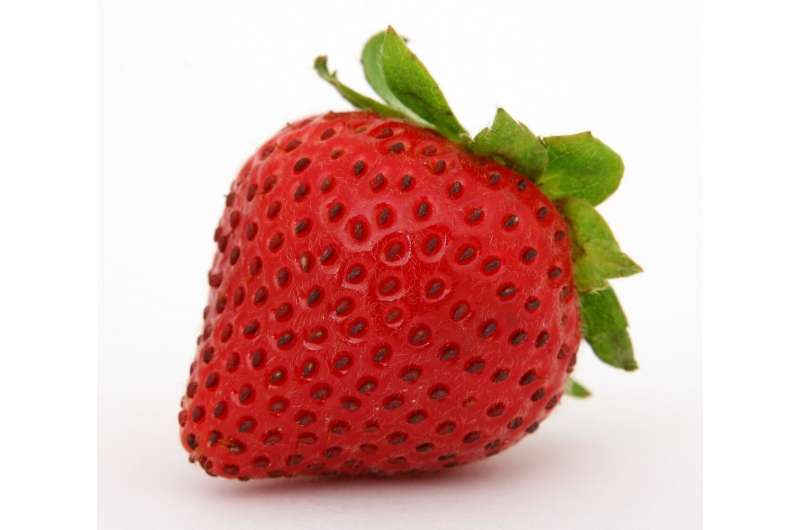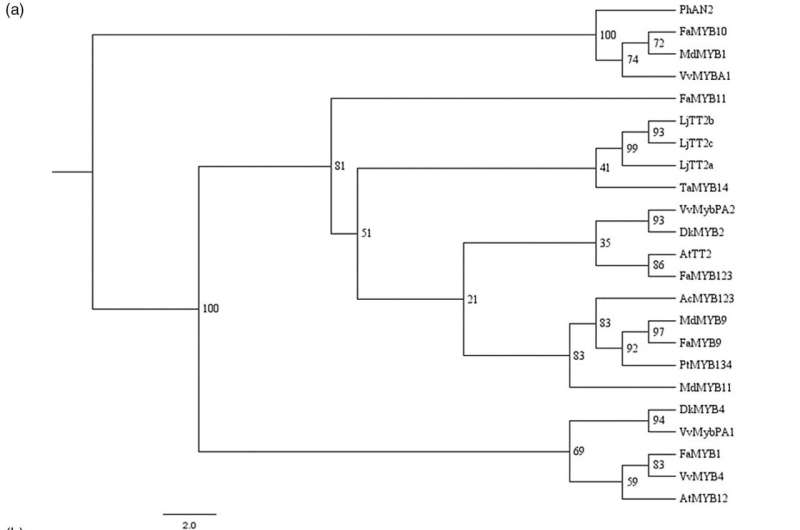This article has been reviewed according to Science X's and . have highlighted the following attributes while ensuring the content's credibility:
fact-checked
peer-reviewed publication
trusted source
proofread
Researchers identify a new protein that controls the production of strawberries' red color

A research group at the University of Cordoba characterizes a new transcription factor that regulates, during the ripening of strawberries, the production of anthocyanins responsible for giving them their red hue.
The strawberry is a fruit that stands out for its color, aroma, flavor and texture. These aspects—known as organoleptic properties, which determine their quality and the preferences of their potential consumers, and of the insects that disperse the seeds, favoring the subsequent growth of future plants—occur in the strawberry's ripening process.
The Biotechnology and Plant Pharmacognosy research group at the University of Cordoba, under the direction of Juan Muñoz Blanco, has been studying the genetic regulation of strawberry ripening for several years, and has now taken a further step in their understanding of this key process by identifying a new protein involved in the control of the production of the fruit's red color. It is known as a transcription factor protein (FaMYB123), which is responsible for activating or suppressing the expression of other genes.
According to the study, which is part of the doctoral thesis of Félix J. Martínez-Rivas, a researcher trained at the UCO, was published in The Plant Journal. This transcription factor is mainly responsible for the production of anthocyanins, the pigments that, in the case of strawberries, give them their characteristic red color.

To verify this, they created a transgenic strawberry plant in which they repressed the expression of the FaMYB123 transcription factor, and what they saw is that the amount of anthocyanins was more repressed in those transgenic plants than compared to normal fruit. That is, without the transcription factor described, the strawberry does not exhibit all of its red color.
This is not produced by this protein alone, however, since transcription factors don't work in isolation, but rather in combination. In this case the research team found that FaMYB123 is related to another previously-known factor (FabHLH3), also related to strawberry pigmentation. The interaction between the two contributes to the increased production of anthocyanins during their ripening.
The study, in short, provides new knowledge of the control of strawberry ripening. According to Francisco Javier Molina Hidalgo, on the research team, "knowing which piece of the puzzle controls each part of the ripening process—in this case, the color red—then allows us to manipulate it genetically, or use it as a tool in breeding programs in which different varieties are mixed to create new ones."
Knowing in greater detail how strawberries ripen is key in a country like Spain, which is Europe's main producer of them, with the province of Huelva topping the list.
More information: Félix J. Martínez‐Rivas et al, FaMYB123 interacts with FabHLH3 to regulate the late steps of anthocyanin and flavonol biosynthesis during ripening, The Plant Journal (2023).
Journal information: The Plant Journal
Provided by University of Córdoba




















